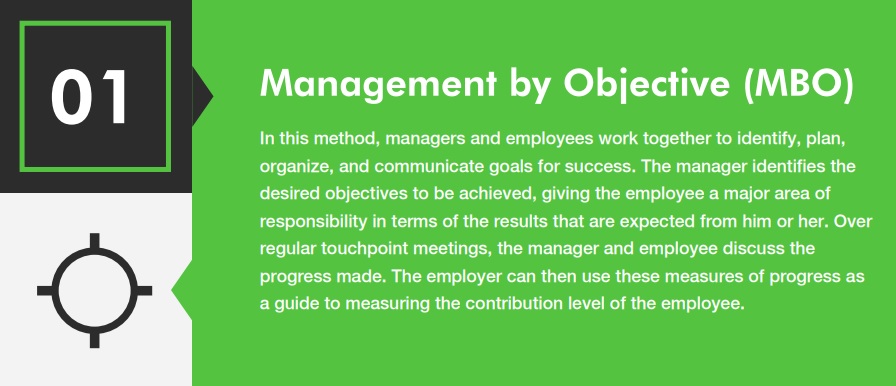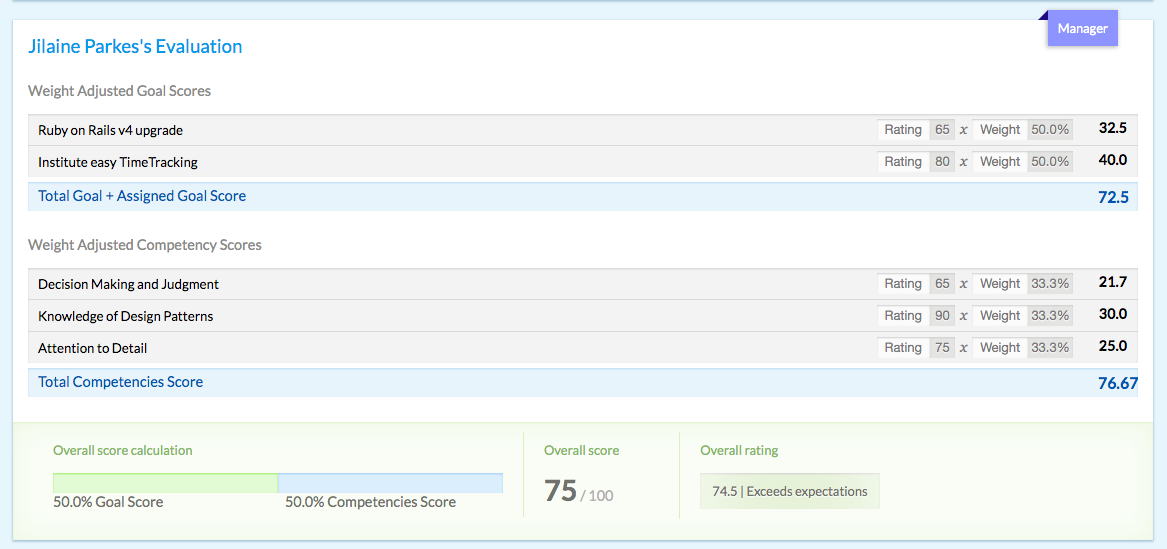
7 Modern & Actionable Performance Appraisal Methods
The employee performance appraisal process is crucial for organizations trying to boost employee productivity and improve overall success. Over the years, a wide variety of performance appraisal methods have been utilized, some of which are more suited than others to meet modern demands. Let’s take a look at the definition of performance appraisal before we start to explore modern methods.
What is Performance Appraisal?
Performance appraisal refers to the process of evaluating the performance of an employee over a certain time period with the intention of assessing ways to improve their success. It usually manifests in a workplace as the annual or quarterly process that involves evaluating each employee’s performance and productivity against the established set of objectives for that year or quarter. By evaluating an employee’s skills, strengths, and gaps alike, the performance appraisal process can help in determining wage raises and promotions (assuming a pay-for-performance process exists).
Traditional methods of employee engagement are no longer yielding effective results. They focus more on measuring an employee’s past performance, rather than improving future work, which is why many organizations view the entire process as futile. However, by adapting their performance appraisal methods to be more accommodating to modern demands, the performance appraisal process can be extremely beneficial in:
- Defining company goals clearly
- Providing real-time and effective feedback to all team members
- Enhancing employee performance and productivity
- Spotting training and development needs
- Offering insights into counter-productive and ineffective tasks
- Improving employee engagement and employee retention
- Aligning individual performance with organizational goals
- Transforming the workforce into a strategic advantage
7 Modern & Actionable Performance Appraisal Methods
You can download our infographic containing all 7 performance appraisal methods to go by clicking the button below! Here’s a quick preview:

7 Modern & Actionable Performance Appraisal Methods
Send download link to:
1. Management by Objective (MBO)
In this method, managers and employees work together to identify, plan, organize, and communicate goals for success. The manager identifies the desired objectives to be achieved, giving the employee a major area of responsibility in terms of the results that are expected from him or her. Over regular touchpoint meetings, the manager and employee discuss the progress made. The employer can then use these measures of progress as a guide to measuring the contribution level of the employee.
While useful in determining rates of productivity, this process usually emphasizes career-oriented and tangible goals. Therefore, intangible aspects of an employee’s performance such as their interpersonal skills or job commitment often go ignored.
2. Behaviorally Anchored Rating Scale (BARS)
This method is often thought of as being the most effective, as it succeeds in bringing out both the qualitative and quantitative benefits of the performance appraisal process. In the Behaviorally Anchored Rating Scale (BARS) system, the employer compares employee performance with specific behavioral examples that are anchored to numerical ratings.
Because this method accesses both quantitative and qualitative forms of measurement, while also incorporating intangible qualities of employees into the rating system, BARS succeeds in providing clear standards, improving feedback, and providing accurate performance analysis and consistent evaluation. Its primary drawback is, like most other performance review methodologies, when done manually it poses the risk of being skewed by distortions caused by bias.
3. Critical Incident Method
In this method, an employer evaluates an employee based on certain events, known as “critical incidents”, in which the employee either succeeded tremendously or failed in any given task. Throughout the process, the evaluator maintains a digital or physical journal in which they store the information from the different incidents.
This process, though manually demanding, is useful for the individual growth of employees. By keeping detailed records of both the positive and opportunity area milestones of an employee’s career trajectory, employers can give detailed information in their feedback, improving the chances of development in the future. These metrics can be readily reviewed during the scheduled progress / 1:1 meeting.
4. Assessment Centre Method
This performance appraisal method assesses employee performance in social-related situations. Employees are asked to take part in situational exercises (in-basket exercises, workgroups, simulations, role-playing exercises, etc.) that aim to highlight their potential success in various roles and bearing various responsibilities.
While this process is useful in giving insight into the employee’s personal characteristics that can influence their success (i.e. ethics, tolerance, problem-solving skills, judgement, introversion or extroversion, adaptability, collaboration, etc.), it can also result in unhealthy competition between workers. Also, it has the potential to bear adverse effects on low performers due to the social nature of the testing.
5. Psychological Appraisals
This method is particularly useful when determining the hidden potential of employees because it focuses on evaluating an employee’s future performance rather than the results of their past work. In this performance appraisal method, qualified psychologists conduct a variety of tests on employees, including in-depth interviews, psychological tests, and private discussions. These tests aim to identify an employee’s emotion, intellect, and other related traits that could affect their future performance in an organization.
Although this method is thorough and insightful, it can evidently be a slow, complex, and costly process. Further, the quality of the results hinges upon the psychologist who administers the procedure and a variety of external influencers that may affect the employee during testing (e.g.; personal stress related events), so results can sometimes be inconsistent.
6. Human-Resource (Cost) Accounting Method
The cost accounting method involves the analysis of an employee’s performance through the monetary benefits they yield to the company. This measurement is usually obtained by comparing the cost of retaining an employee to the monetary benefits (contributions) the organization has ascertained from that specific employee.
This performance appraisal method considers many factors, including unit-wise average service value, quality, overhead cost, interpersonal relationships, and so on. However, its high dependency on the quality of cost and benefit analysis, as well as the memory power of the reviewer, is its primary drawback.
7. 360-Degree Feedback
A common industry discussion is that the annual performance appraisal method is outdated and no longer useful. Workers need ongoing communication with team leaders and managers, and continuous feedback processes like 360-degree feedback, to stay motivated and interested in learning from the results of their performance appraisals.
In the 360-degree feedback method, multiple raters are involved in evaluating the performance of an individual. The feedback of the employee is collected by all agents within the organization who interact with him or her, including superiors, peers, subordinates, and even customers. Usually, this feedback is collected by an online questionnaire designed specifically for this purpose. When every employee in an organization appraises their managers, peers, customers, suppliers, and takes part in regular self-evaluation, it ensures effective performance analysis with diverse levels of transparency.
Feel free to take this list to go by downloading the infographic!
7 Modern & Actionable Performance Appraisal Methods
Send download link to:
The Future of Employee Performance Appraisal Methods
Usually, the HR department of an organization supports leaders who typically conduct employee appraisal processes to assess how well employees are engaged with their work, and what can better the chances of their success. However, with the rapid advancement of HR technology available, the outdated appraisal methods in place are not offering the quality of results that are needed for an organization to optimize its success. Consider the following findings:
When traditional performance appraisal methods are used:
- 45% of HR leaders do not think annual performance reviews are an accurate appraisal for employee’s work
- 24% of workers would consider leaving their jobs if they have managers that provide inadequate performance feedback
- Up to 210 hours are spent by HR managers on manual performance reviews every year
However, when modern performance appraisal methods are used:
- Managers who received feedback on their strengths showed 8.9% greater profitability
- Companies who implement regular employee feedback have turnover rates that are 14.9% lower than companies for which employees receive ineffective or no feedback
- 94% of employees would prefer their manager to address mistakes and opportunities in real-time
- 68% of employees who receive accurate and consistent feedback feel fulfilled in their jobs
The technological power of performance tracking in recent years has skyrocketed. Automated HR software now allows HR leaders to produce performance appraisal methods in just a few minutes. Even more impressive is that all-in-one HR tools, like Sprigg, have been developed to enable businesses to ensure global consistency in performance reviews, while still offering room for role-specific variations that traditional methods benefit from.
Modern Performance Appraisal in Practice
As a simple, intuitive, flexible and cost–effective Performance Management platform, Sprigg offers modern and effective performance appraisal tools, including:
- Continuous & 360 Feedback: Real-time, ongoing feedback, seamless check-in meetings software and meeting tool templates, and intuitive multi-rater/360-degree feedback tools. Sprigg makes giving and receiving feedback within an organization easier and more actionable.
- Performance Reviews & 1-on-1s: Sprigg helps HR professionals assign the metrics that matter to their performance appraisals, encourages continuous appraisal discussions, and aids in managing the frequency of reviews conducted.
With modern performance appraisal HR software like Sprigg, businesses can eliminate critical performance gaps and effectively prepare their organization for the future of work.
To learn more about SpriggHR’s modern performance appraisal software, request a free demo. We’ll customize a demo just for you, lead by one of our senior HR professionals.





